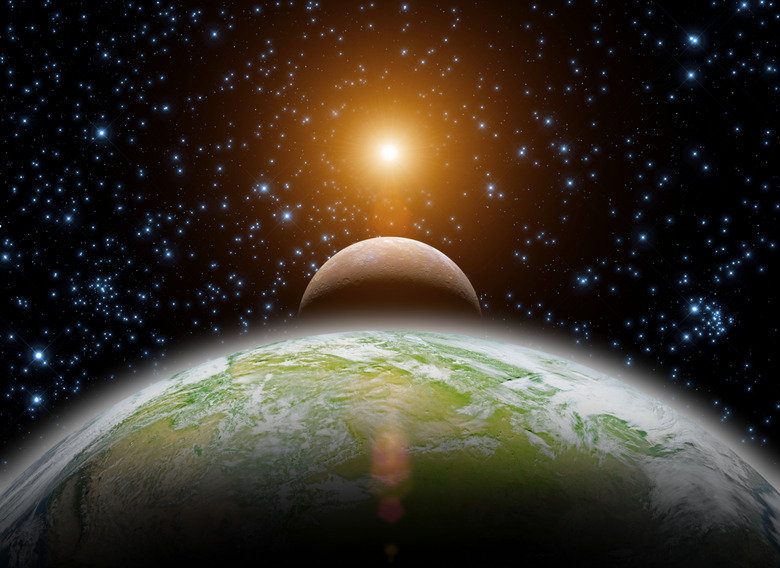What Is Earth's Position In The Solar System?
The term "solar system" refers generally to a star and any objects under the influence of its gravitational field. The solar system that includes Earth consists of the star known as the sun, a number of planets, an asteroid belt, numerous comets and other objects. Earth's position in this roughly disk-like arrangement provides the opportunity for life, as known to humankind, to arise.
Arrangement of the Solar System
Arrangement of the Solar System
The solar system includes eight planets and one planetoid, or dwarf planet — Pluto. The inner four planets — Mercury, Venus, Earth and Mars — are called terrestrial planets; these are smaller, solid and "Earth-like." The outer four — Jupiter, Saturn, Uranus and Neptune — are termed Jovian planets; they are large, mostly gaseous and are "Jupiter-like." Pluto was declassified as a planet in 2006, as it more strongly resembles an oversized comet than anything else.
Earth in the Greater Scheme
Earth in the Greater Scheme
Earth is the third planet from the sun and orbits at an average distance of 93 million miles, meaning that it takes sunlight about eight minutes to arrive. As you move outward from the sun, the planets are spaced increasingly farther apart. Jupiter is about five times as far from the sun as earth, while Neptune is some thirty times farther.
Cite This Article
MLA
Crystal, Mike. "What Is Earth's Position In The Solar System?" sciencing.com, https://www.sciencing.com/what-earths-position-solar-system-4579969/. 24 April 2017.
APA
Crystal, Mike. (2017, April 24). What Is Earth's Position In The Solar System?. sciencing.com. Retrieved from https://www.sciencing.com/what-earths-position-solar-system-4579969/
Chicago
Crystal, Mike. What Is Earth's Position In The Solar System? last modified March 24, 2022. https://www.sciencing.com/what-earths-position-solar-system-4579969/
